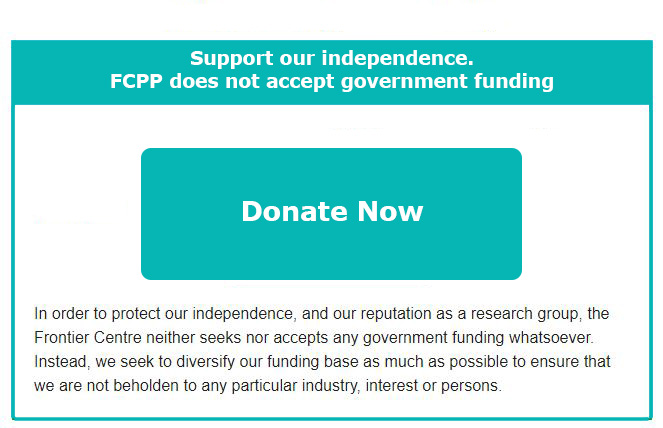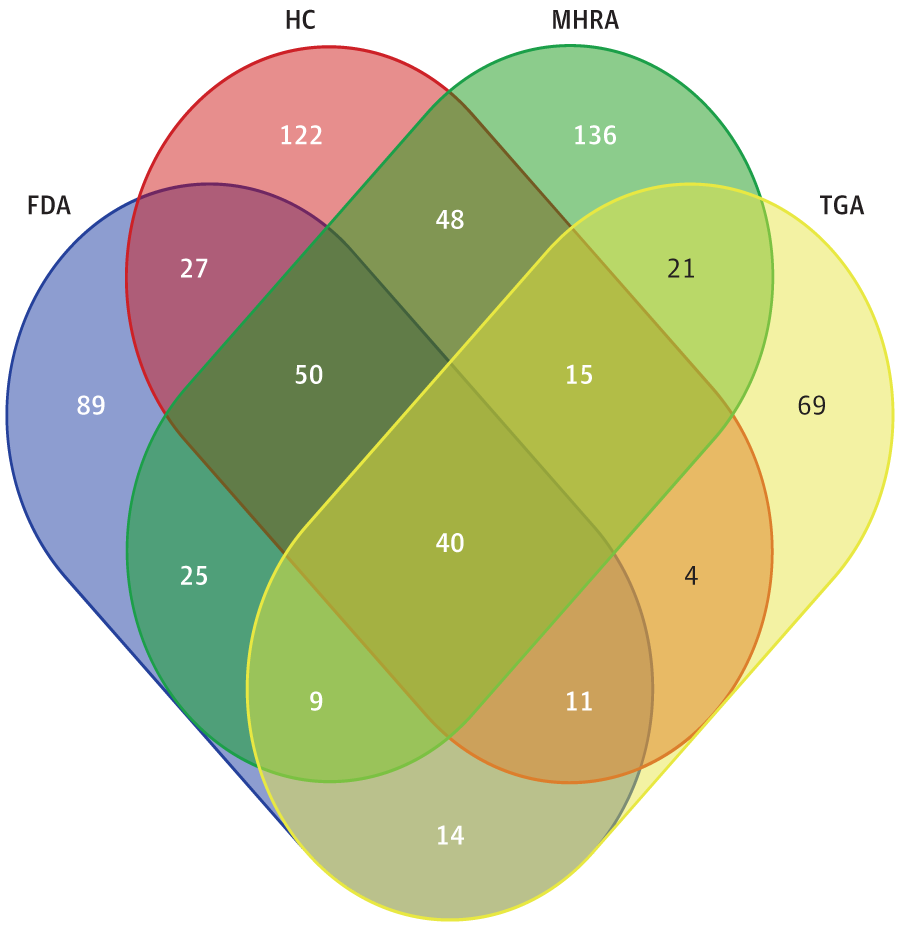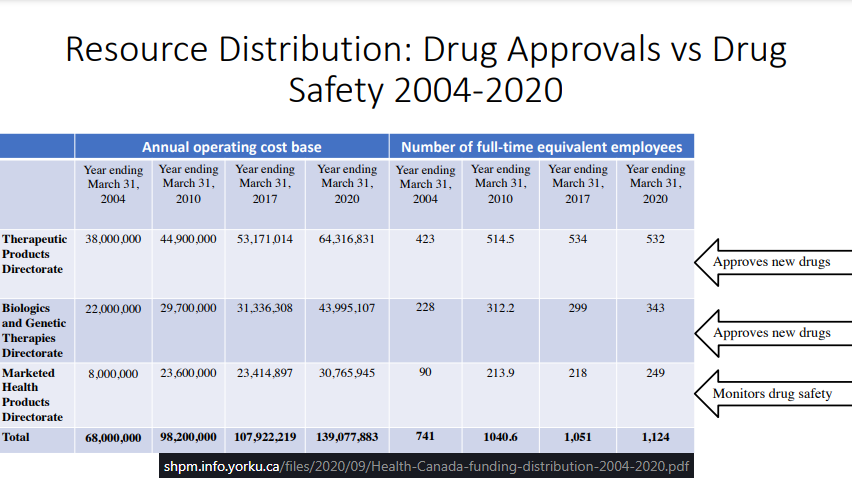Can we trust our government and medical establishment? Not entirely. Some glimpses of Health Canada’s approach to prescription drug safety are less than assuring. Public policy should be guided towards more drug safety, not less.
Health Canada was solely funded by taxpayers before 1994 when it began to issue user fees to companies that wanted their drugs approved. User fees make sense in many circumstances, but perhaps not here. Half of Health Canada’s prescription drug program comes from user fees and a senior official within Health Canada admitted that this turns drug companies into clients.
It seems less than coincidental that drug approvals seemed to speed up after 1994. That helps drug companies, but not patient safety. Studies have shown that one in five drugs that has a 300-day review will show serious side effects only after it is in the marketplace. For drugs reviewed just 180 days, the same occurs for one in three drugs. Given that only one in 10 new drugs is significantly better than existing ones, the rush seems unjustifiable.
There are other problems. For the past 10 years, Health Canada has devoted three times the money and staff to get drugs approved as it has to ensure drugs already being sold are safe. Critics also warn that standards for approving new drugs have become weaker.
Drug companies in the U.S. have paid billions in settlements for the illegal promotion of drugs for off-label uses. Yet, a Health Canada spokesperson told the Toronto Star in 2014 that the regulator “has not been made aware of any specific similar issue in Canada and has not received complaints concerning these companies promoting off-label uses of their products in Canada.” Then again, the regulator provided no evidence they had even looked.
Even worse, Health Canada knew if off-label prescriptions were related to an incident of bad side effects, but for some reason never acknowledged this in records. One had to go to the Food and Drug Administration (FDA) in the U.S., which collates side-effect data from other countries, for full disclosure on the Canadian cases.
Health Canada sometimes issues warnings later than other countries. In mid-2013, the U.S. warned that the blood thinner Dabigatran could cause serious or fatal bleeding. Canada made no such warning until early in 2015.
The U.S. yanked Cisapride from the shelves on July 14, 2000 for having killed 103 people by causing irregular heartbeats and cardiac arrest. Canada kept the gastrointestinal drug on the market another month. Fifteen-year-old Canadian Vanessa Young died of a heart attack from Cisapride that year. Her father, Terence Young, became an MP and saw through the passage of Vanessa’s Law in 2014. It finally gave the minister of Health the power to issue a drug recall, something Health Canada could previously only negotiate with drug companies.
But Canada’s problems are far from over. In March 2020, Ulipristal, a drug used to treat uterine fibroids, was suspended for use in Europe because it damaged one woman’s liver so badly, she needed a transplant. Health Canada warned of the risk early in 2019, yet kept the drug on the market until its manufacturer voluntarily withdrew the drug on September 30, 2020.
Sometimes, the regulator turns a blind eye to useless drugs. In January 2019, a trial of Lartruvo, a drug for soft tissue sarcoma, showed the drug did not work. Its maker, Eli Lilly, pulled the drug from the U.S. and Europe. Health Canada also announced the drug did not work, yet it remains on sale.
Although less oversight seems like the last thing Canada needs, some people think otherwise. In 2018, Canada proposed giving only a cursory review of drugs on an “urgent public health needs” list and rubber-stamp them if the U.S. or Europe had already done so. That’s risky because assessments can vary greatly. Researchers examined safety advisories issued from 2007 through 2016 by regulators in the U.S., U.K., Canada and Australia. The agencies issued the same warnings only 40 times, comprising seven per cent of the nations’ combined total of drug warnings.
When it’s so easy for regulators to miss problems, the last thing Canada needs to adopt is a sloppier process of its own. If it wants to lean on the wisdom of other countries, it seems far wiser to err on the side of caution instead of supply. A cure should never be worse than the disease and when regulators don’t do due diligence, that’s the very thing that can happen.
Lee Harding is a research associate with the Frontier Centre for Public Policy.
Photo by Isaac Quesada on Unsplash.

|
Each shape indicates the number of drug-risk issues for which included regulators have issued advisories (n = 573 drug-risk issues for which all four regulators had approved the drug). The centre (n = 40) indicates the concordant situation in which all regulators had issued an advisory. FDA indicates U.S. Food and Drug Administration; HC, Health Canada; MHRA, U.K. Medicines and Healthcare Products Regulatory Agency; and TGA, Australia’s Therapeutic Goods Administration. Source: https://cdn.jamanetwork.com/ama/content_public/journal/intemed/938087/ild190005f1.png |





